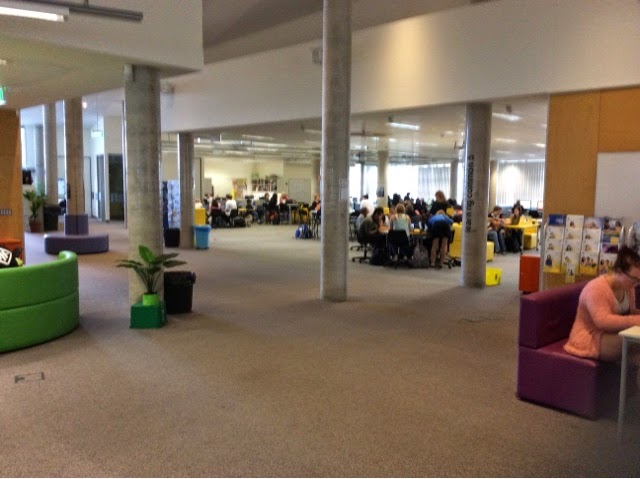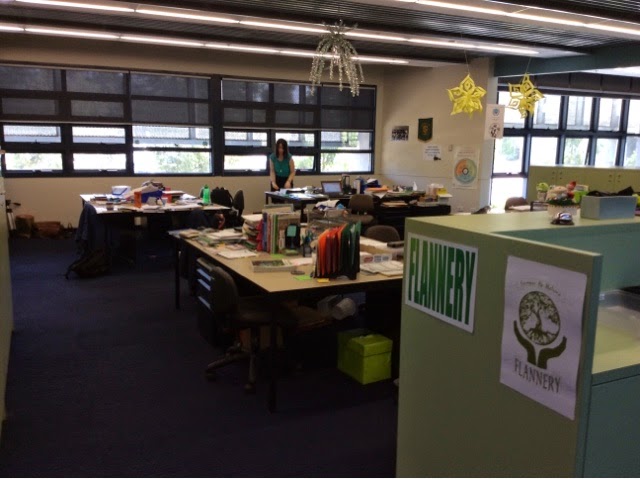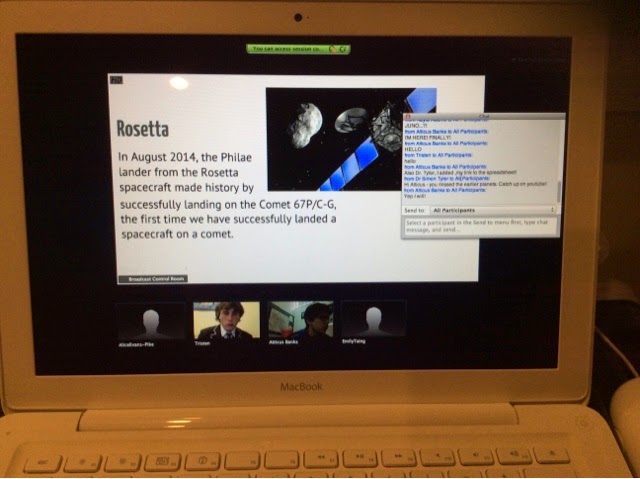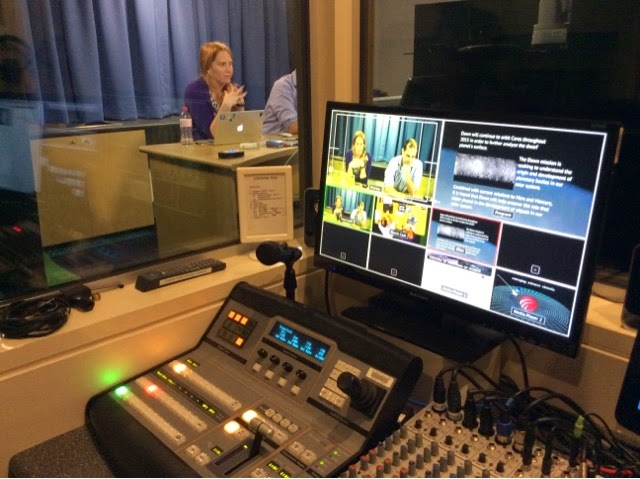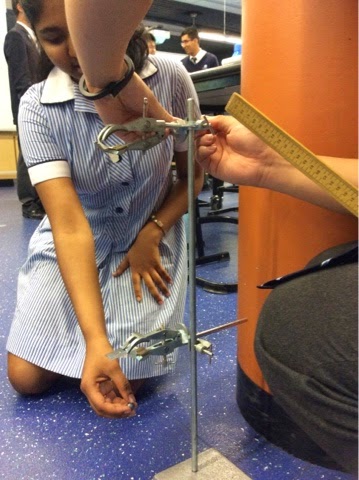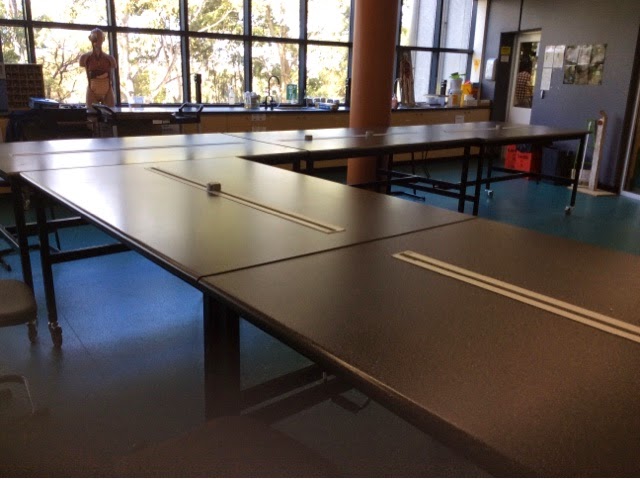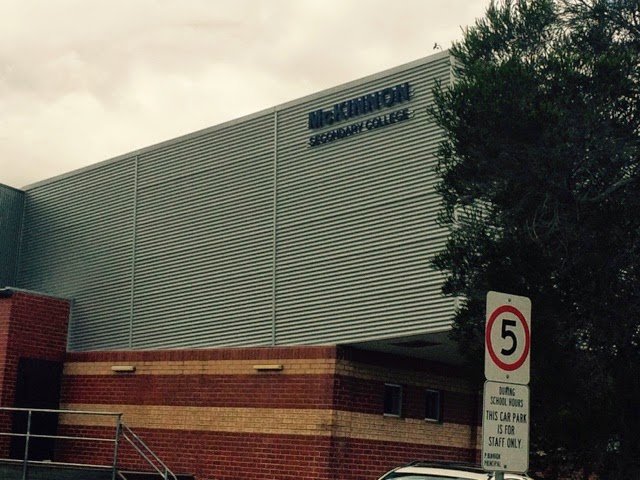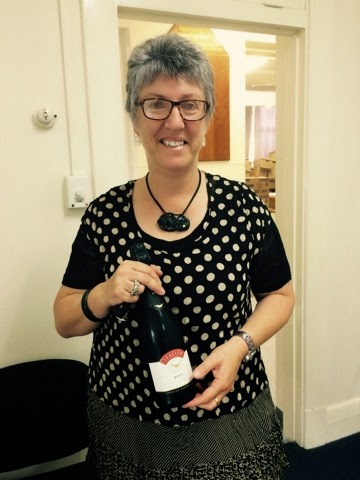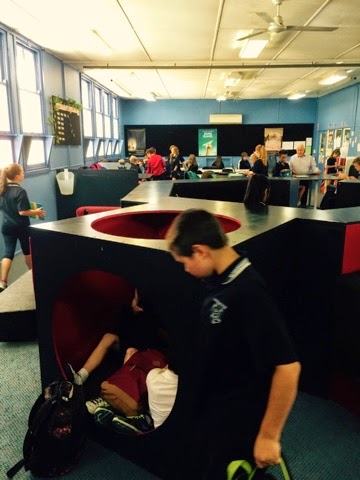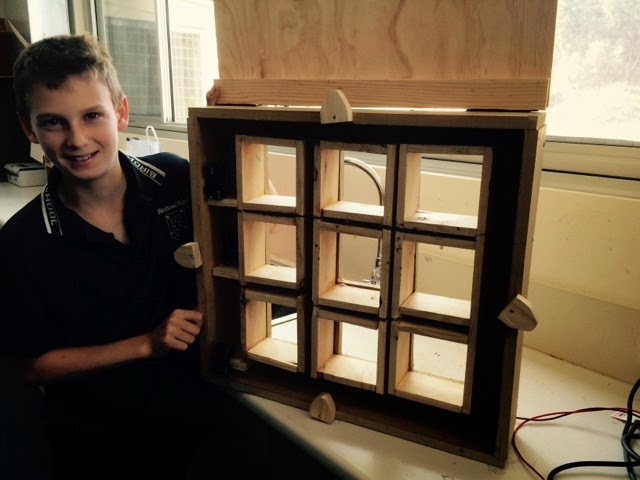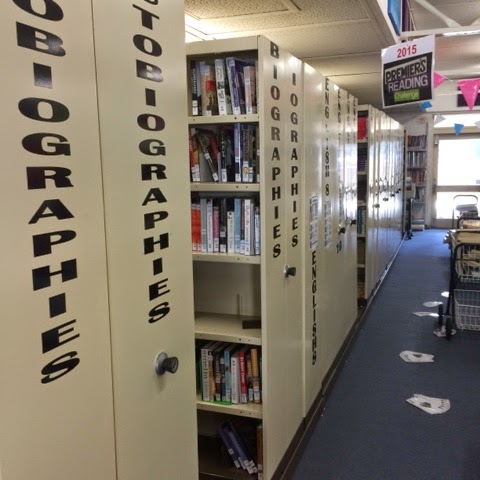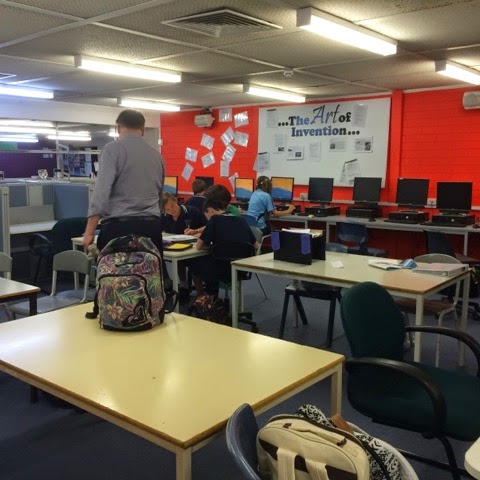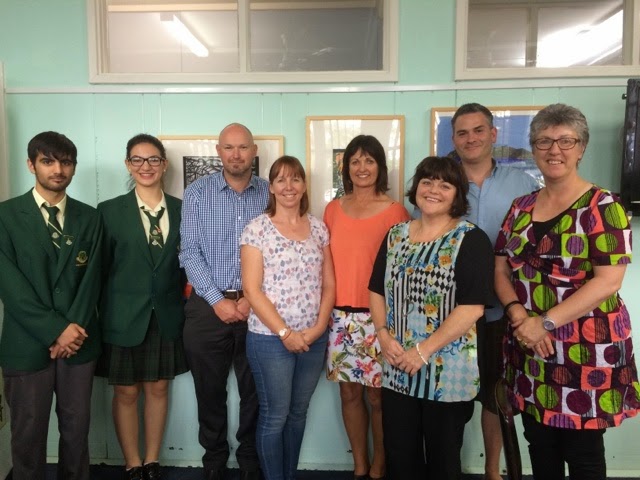I made a list on notepad as I was leaving Future Schools Conference two weeks ago. What we could change now, this term, this year, next year. It looked like this -
Things to change now
- encourage staff to flip the classroom
- weekly sharing of Yr 9 class docs - via Google Docs
- any staff who want to trial different furniture - get it!
- look for further integration - not just the MLP trial going on now
Short Term
- remove walls where we can
- plan for vertical forms
Long Term
- one year's warning / notice possible change to school day - two shifts
- evaluate pastoral care system - time/value
- IT teacher support - investigate
- add solar power, extend undercover - change the building
- de-isolate SLT from rest of the school
However....a colleague reminded me that we should be using 21st century thinking and that I should just not be diving in and ploughing ahead (nothing like mixing metaphors) with what should be the final stage of any 'design thinking process' (thanks Mr O)
So....we have a framework for out TOD in June.
Looking forward to working through the process ...and then diving in...
Time and Title
|
Content
|
8.45 – 9.00
Staffroom
|
Define the Problem / (Solution needed) OL/CL
In order to solve a problem we need to clearly define what the problem is first. We must decide exactly what needs to be solved, and give proper context to the problem.
|
9.00-10.00
Staffroom
|
Discover – Feedback from teams from Melb/Sydney/Chch/Auck/Tauranga/ModCurDes/ MLP trial etc
This is the stage of researching and gathering, and analysing clear knowledge about the problem. This helps us to give the problem context so that we can identify with it easier.
(This is where we record and document all our professional learnings from conference, keynotes and professional readings over the last 18-24 months. This is the groundwork that has been done - visits to MLE schools in Auckland, Edutech conference, Melbourne conference, future schools conference, PPL last year etc)
|
10 – 10.25
Staffroom
|
Morning Tea
|
10.30 – 12.25
Set venues
|
Dream – cross curricular teams (readings provided beforehand)
Here we open up the heart and mind to the possibilities and visions of a Modern Learning Curriculum at Rangiora High School the way we wish to see it. This phase is all about imagination, extrapolation and visualisation.
(This is where we put everything on the table, dream big, see how much of the dream we can fit in. )
|
12.30 – 1.00
Staffroom
|
Debrief - Dream – feedback
|
1.00 – 1.55
|
Lunch
|
2.00 – 3.00
Set venues
|
Design – Learning Teams – extended learning episode Term 4
This is basically the workshopping phase. Here the actual mechanics of the Modern Learning Curriculum begin to take shape. It will require amongst a number of other technical requirements - consultation, critical analysis and evaluation, financial forecasting, timetable models, trials and further evaluations. (This would be the perfect phase to be the main part of workshopping in the TOD April 20? TOD could then be part of the 2 year process of gathering information about where we are going and allow staff to co-construct the MLC look for RHS based on the problem/solution as stated in phase 1 and the gathering in phase 2 - it would make the day highly targeted and productive to producing an outcome for MLC at RHS)
|
3.00 – 3.20
Staffroom
|
Debrief – Design – feedback
|
